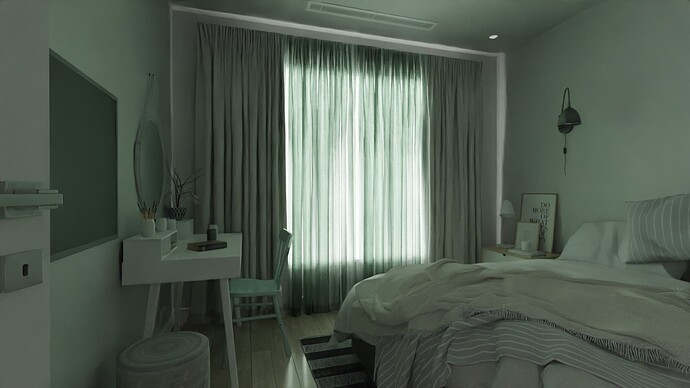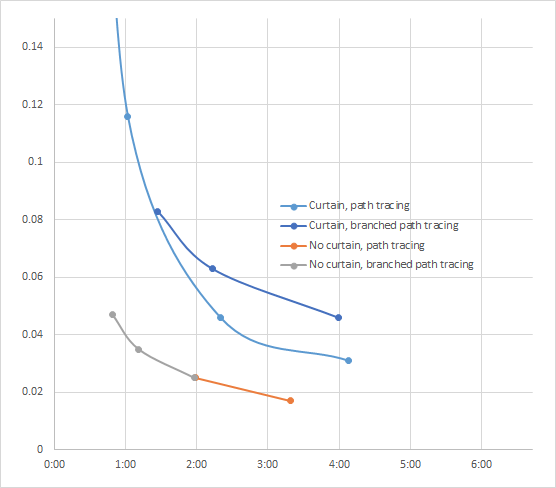I have a room that is lit entirely through a single window with tinted, curved, partially transmissible curtains. I’m using standard Cycles for rendering. (I have an AMD GPU, so no Optix and no K-Cycles for me, and I am hesitant to spend $$$ on E-Cycles since it supposedly offers little benefit on AMD. And I end up rendering on the CPU anyway, since GPU rendering actually ends up slower for some reason. But I digress.)
If I remove curtains, lighting is relatively easy. But if they are in place, achieving good quality without artifacts becomes a real challenge. The NLM denoiser utterly fails (I end up with large splotches all over the image). I get tolerable results with OpenImageDenoise with Branched Path Tracing / 32 samples or with Path Tracing / 64 samples. But then the problem is that it takes 4 minutes to render one frame in 1080p (so a 20-second animation would take over a day), and 4K is out of the question.
Things I’ve tried:
- Illuminating the room using either an area light that’s fitted to the size of the window, or an environment HDRI. The area light seems to work slightly better.
- Raising “Samples” in the area light setting from the default 1 to 4. This has no perceptible visual effect.
- Adding a “light portal” in the window, sized to match the window and oriented to point inside the room. This also has no perceptible visual effect (in most cases, it has no effect whatsoever), neither with the environment light nor with the area light, and whether I place the portal in front of the curtain or behind the curtain. This makes me suspect that I’m using it wrong but I don’t see how.
There are tons of other settings in the Cycles config, but I have no clue which ones to try, and, at several minutes per render, it’s kind of hard to experiment.
Any suggestions?
One of the better-looking renders (64 samples with OpenImageDenoise):
P.S. If you’re wondering, the scene is a Blender port of https://assetstore.unity.com/packages/3d/environments/urban/archvizpro-interior-vol-8-199367.

